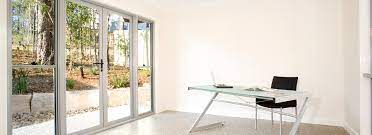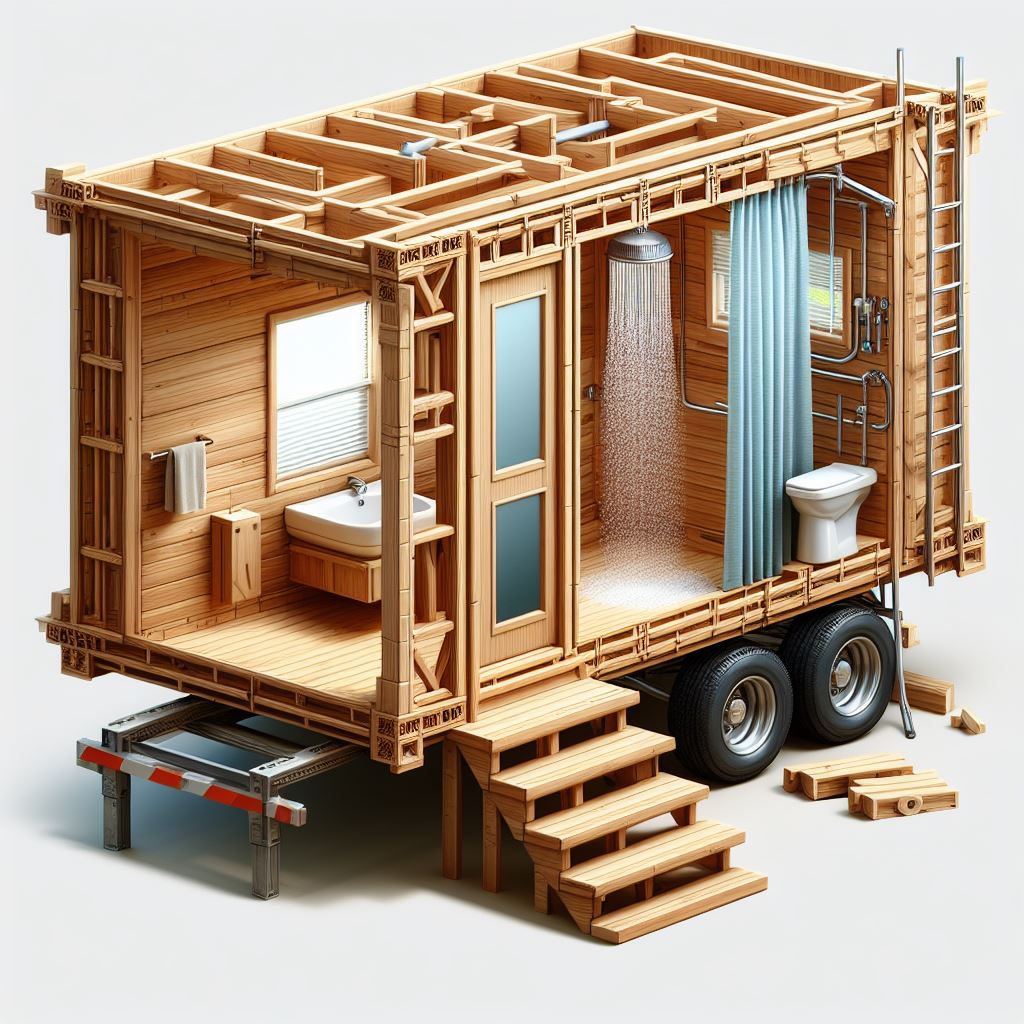The best type of HVAC setup for a mobile home depends on various factors, such as climate, budget, space limitations, and personal preferences.
Considering the unique characteristics of mobile homes, some HVAC setups are more effective than others. You must consider available space, insulation, energy, HVAC system efficiency, and budget to determine the best HVAC for your modular home.
Let’s look more into choosing manufactured home HVAC systems:
Is HVAC Necessary in a Mobile Home?

Installing an HVAC system in a tiny home largely depends on individual preferences and needs. Local building codes may require your manufactured home to have HVAC. Other factors that may determine the necessity of an HVAC system for your mobile home include:
- Climate
If you live in an area with extreme temperatures, HVAC may be necessary for maintaining livable indoor conditions. HVAC systems provide heating and cooling to ensure a comfortable environment year-round in regions with hot summers or cold winters.
- Comfort
Even in milder climates, HVAC systems can enhance comfort by regulating indoor temperatures and humidity levels. Comfort is critical for individuals with specific health conditions.
- Moisture Control
HVAC systems provide proper ventilation, which helps control moisture levels inside the home. Moisture control prevents issues like mold growth and dampness.
- Energy Efficiency
Modern HVAC systems are more energy efficient than alternative heating and cooling methods, which can lower utility bills.
- Resale Value
HVAC systems can increase your mobile home’s resale value and appeal to potential buyers.
How are Most Mobile Homes Heated?
The choice of heating method for mobile homes depends on factors such as fuel availability, energy efficiency, installation cost, and personal preferences. It is important to ensure that your heating system meets safety standards and local building codes. Most mobile homes are heated using one of the following methods:
- Forced Air Furnaces
Forced air furnaces use natural gas, propane, or electricity to heat and distribute air throughout the home via ductwork. Forced air furnaces are popular for mobile homes as they can operate on different fuel types.
- Electric Furnaces
Electric furnaces are another popular choice for mobile homes, especially where natural gas or propane are not readily available. Electric furnaces use electric resistance coils to generate heat and have a blower fan to circulate hot air.
- Heat Pumps
Heat pumps are becoming increasingly popular with mobile homes, as they can provide both heating and cooling. They work by transferring heat between the indoor and outdoor units using refrigerant, making them efficient options for moderate climates.
- Wood or Pellet Stoves
Some homeowners use wood or pellet stoves to heat their tiny homes. These stoves burn wood or compressed wood pellets to generate heat. The heat is distributed throughout the home using fans or by natural convection.
- Space Heaters
Some homeowners use space heaters, either electric or propane, as supplemental heating sources in mobile homes. However, they are typically not the primary heating source due to their limited capacity and efficiency.

How Are Most Manufactured Homes Cooled?
Mobile and tiny homes are cooled using various methods, depending on size, location, budget, and personal preferences. Here are some common cooling options for these types of homes:
- Central Air Conditioning
Some modular homes use central air conditioning systems similar to those in traditional stick-built homes. These systems use ductwork to distribute cooled air, providing consistent and even cooling.
- Ductless Mini-Split Systems
Ductless mini-split systems are a popular cooling option for mobile, modular, and tiny homes. These systems consist of an outdoor compressor unit and one or more indoor air-handling units connected by refrigerant lines. They do not require ductwork, making them ideal for smaller spaces. Additionally, they offer customized temperature control for different zones within the home.
- Window Air Conditioners
Window air conditioners are a cost-effective cooling solution for tiny homes or individual rooms in modular homes. These units are cheap and easy to install and operate.
- Portable Air Conditioners
Portable air conditioners are similar to window units, but you can move them from one location to another within the home. They typically vent warm air through a window or vent kit and are suitable for cooling small spaces or specific rooms.
- Evaporative Coolers (Swamp Coolers)
Evaporative coolers are effective in dry climates and can be an energy-efficient cooling option for mobile or tiny homes. These systems use water evaporation to cool the air and can be installed as portable units or whole-house systems.
- Ceiling Fans and Ventilation
Ceiling fans and ventilation systems can help circulate air and improve airflow within a mobile home. While they do not provide cooling like air conditioners, they help create a more comfortable indoor environment by reducing humidity and providing a breeze.
What is the Best HVAC Setup for Mobile Homes?
The best type of HVAC setup for mobile homes is one designed for their unique characteristics. It considers space limitations, budget, insulation efficiency, and ductwork. Here are a few options:
- Packaged HVAC Systems: Packaged HVAC systems are considered one of the best options for mobile homes due to their compact design and ease of installation. These systems contain all components (heating, cooling, and sometimes even air purification) in one outdoor unit, which sits outside the mobile home. They are efficient and can provide heating and cooling, making them suitable for various climates. A packaged HVAC system for a mobile home costs between $5,500 and $12,000 or more.
- Ductless Mini-Split Systems: Ductless mini-split systems are another excellent choice for mobile homes. These systems consist of an outdoor compressor unit and one or more indoor air-handling units connected by refrigerant lines. They don’t require ductwork, making them ideal for mobile homes with limited space. Ductless mini-splits offer zoned temperature control and are energy-efficient, making them suitable for heating and cooling. Ductless mini-split systems cost between $3,500 and $15,000 to install.
- Heat Pumps: Heat pumps are versatile systems that can provide heating and cooling. They work by transferring heat between the indoor and outdoor units using refrigerant. Heat pumps are energy-efficient and a good option for mobile homes in moderate climates. Mobile home heat pumps can set you back anywhere from $5,000 to $16,000 or more.
How to Save Money on Heating and Cooling Your Mobile Home

You can implement several strategies to reduce heating and cooling costs while maintaining a comfortable living environment in your mobile home. These strategies will save you money without sacrificing your comfort:
- Invest in an energy-efficient HVAC system for your mobile home. Consider ductless mini-split systems or heat pumps with high Energy Star ratings.
- Ensure proper insulation to prevent heat loss in the winter and heat gain in the summer. This may include adding insulation to walls, floors, and ceilings.
- Seal air leaks around doors, windows, and other openings to prevent conditioned air from escaping and outside air from entering. Use weather stripping, caulking, or spray foam insulation to seal leaks effectively.
- Install a programmable thermostat to adjust the temperature settings automatically based on your schedule. This can help reduce energy consumption by lowering the temperature when you’re away and raising it when you’re home.
- Schedule regular maintenance for your HVAC system to ensure it operates efficiently. Clean or replace air filters regularly, check for any leaks or ductwork issues, and have professional inspections and tune-ups performed annually.
- Consider alternative heating sources. Depending on your location and energy prices, alternative heating sources such as wood stoves, pellet stoves, or propane heaters may offer cost savings compared to traditional electric or gas furnaces.
When choosing your modular home HVAC, size it correctly to increase efficiency and keep down operating costs. Consider its maintenance requirements and choose one that requires minimum maintenance. You can talk to a mobile home HVAC professional for more information.



